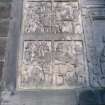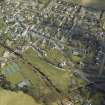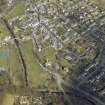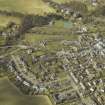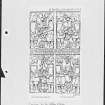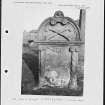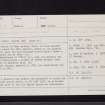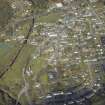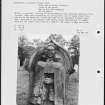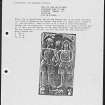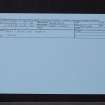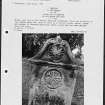Scheduled Maintenance
Please be advised that this website will undergo scheduled maintenance on the following dates: •
Tuesday 3rd December 11:00-15:00
During these times, some services may be temporarily unavailable. We apologise for any inconvenience this may cause.
West Linton Old Church
Church (Period Unassigned), Churchyard (Period Unassigned)
Site Name West Linton Old Church
Classification Church (Period Unassigned), Churchyard (Period Unassigned)
Alternative Name(s) West Linton Kirk
Canmore ID 50264
Site Number NT15SW 9
NGR NT 1496 5166
Datum OSGB36 - NGR
Permalink http://canmore.org.uk/site/50264
- Council Scottish Borders, The
- Parish Linton (Tweeddale)
- Former Region Borders
- Former District Tweeddale
- Former County Peebles-shire
NT15SW 9 1496 5166.
(NT 1495 5166) Church (NR) (Site of).
OS 25" map (1856)
The Object Name Book of the Ordnance Survey (ONB) describes this as ' The site of this old parish church of Linton is situated in the middle of the present graveyard. It was pulled down and the present one was built in the same year (1782). The old church was very well decorated and had several statues of Saints etc, but were all destroyed when the present church was erected: the heritors of this time ordered them all to be defaced and built into the walls so as not to be seen , but when the new church was completed they had it roughcast so as to cover any portions of the statues that might be visible'.
Name Book 1854
The old church of West Linton, known to have existed since at least the 12th century, stood in the present graveyard, near the Spittalhaugh burial-aisle, where a slight mound can be seen (J Buchan 1927).
It was demolished in 1781-2 (Orig Paroch Scot 1851), when its masonry was found to incorporate a number of carved stones, some evidently of medieval date (OSA 1791).
The modern church, erected in 1781, was drastically re-modelled in 1871.
RCAHMS 1967, visited 1963
There is a general rise within the graveyard on which the Spittalhaugh burial aisle, at NT 1497 5167, is situated. The precise site of the old church cannot be determined.
Visited by OS (JP) 26 June 1970
Publication Account (1985)
There has been a church at West Linton from the 12th century; the present building, however, was built in 1781-a simple rectangle with a hipped roof and a square tower and belfrey projecting from the middle of the north side. The carved woodwork inside dates to its remodelling in 1871.
In the south-east corner of the older part of the graveyard two bee-holes, sheltered ledges for semi-circular straw bee skeps, are incorporated into the south wall of a late 18th century burial aisle to the Lawsons of Cairnmuir and the Douglases of Garvaldfoot. Elsewhere, amongst the usual 17th-18th century gravestones bearing their various symbols of mortality, there ia a fine stone bearing half-size effigies of two men, arm-in-arm, in contemporary dress. Barely visible now, between them, is the Tree of Trial, with a serpent coiled around it; below their feet a coffin, two skulls, and two thigh-bones, and between their heads a crown. The stone is dedicated to John and Richard Alesanders, sons ofJames Alesander, tenant (farmer)in Ingreston. A further stone, dated 1705, reveals a half-scale male figure wearing a buttoned coat, scarf collar and cap:
"Here Archbald Wilson's corps lies in the Grave
Who in his Life himselfe he did behave".
Representations of costumed figures form a particularly interesting group of post-Reformation churchyard monuments, late 17th-mid 18th century of Stobo (no. 63). And on the end panel of a table-tomb at Liberton in Edinburgh (NT 275695) a wider perspective provides evidence of agricultural history in 1754-plough type, plough-team, harrowing and sowing.
West Linton-a prosperous little market town astride the drove route south, just below the crossing of the Pentland Hills-seems to have harboured one of several provincial schools of stone carving. James Gifford, a 'portioner' or farmer, was also a self-styled 'architector' and sculptor. 'Gifford's Stone' (1660) set in a cottage wall opposite the Raemartin Hotel, is an impressive monument-"Six Progenetors ofIames Gifferd wi(th)/his awne portract and eldest sone". In 1666 he also created a cross in memory of his wife and five children. The wife's figure survives, now set above the public well.
Information from 'Exploring Scotland's Heritage: Lothian and Borders', (1985).
Sbc Note
Visibility: This is an upstanding building.
Information from Scottish Borders Council.























